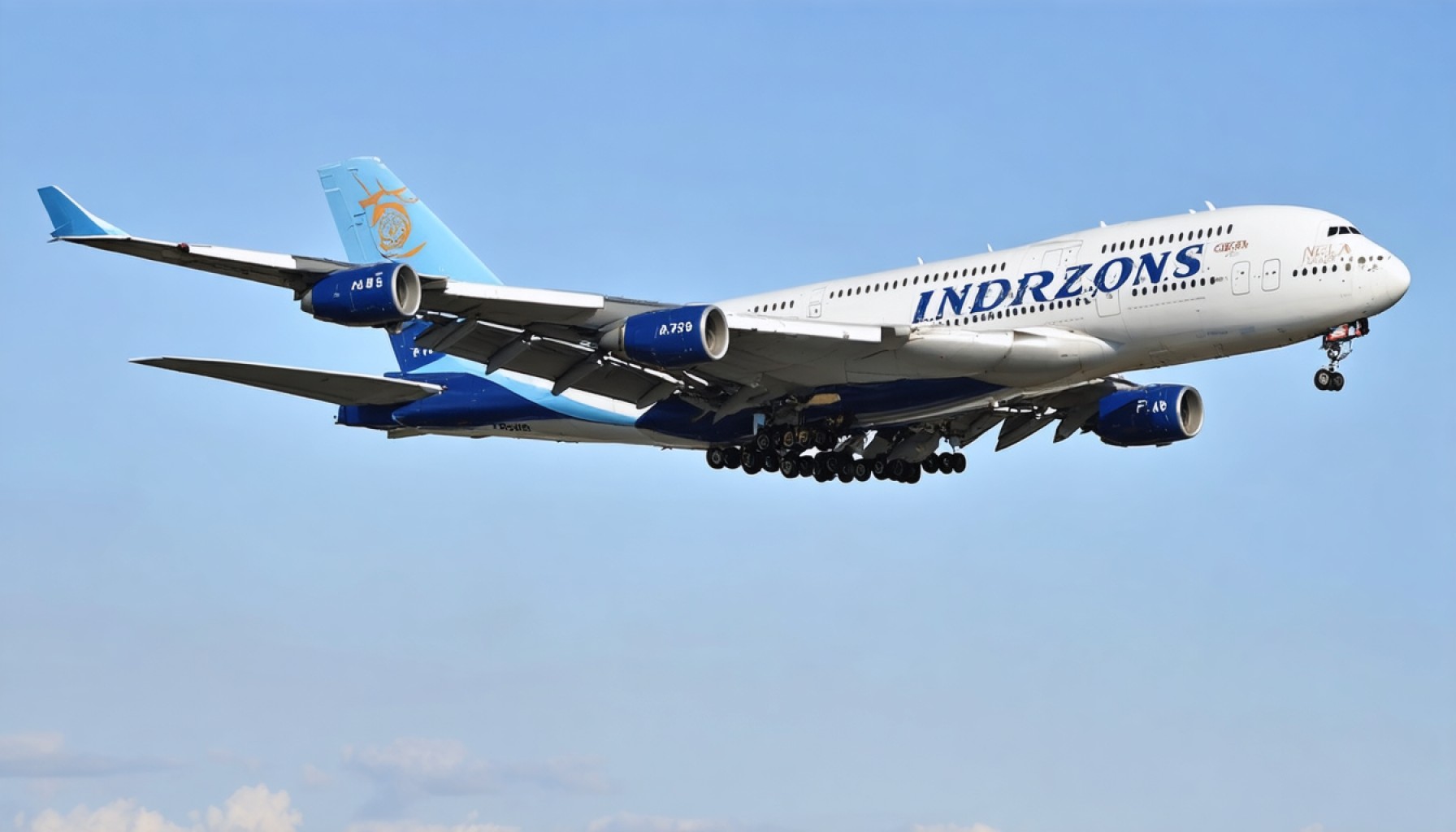- SpiceJet and Air India Express have introduced new flights, doubling Indian airlines on the India-Nepal route.
- SpiceJet resumes flights between Delhi and Kathmandu, focusing on tourism and trade.
- Air India Express offers affordable daily flights to Tribhuvan International Airport, enhancing cultural and economic exchanges.
- Tribhuvan International Airport, a key hub in Asia, connects travelers to major cities like Bangkok, Singapore, and Chinese destinations.
- The airport’s extended operating hours and improved facilities enhance travel efficiency.
- The increased air services boost tourism, business travel, and cultural connectivity between India and Nepal.
A fresh wind is lifting the air traffic between India and Nepal. The skies over the majestic Himalayan range have ushered in two new Indian carriers: SpiceJet and Air India Express. As they soar, they double the number of Indian airlines operating on this vital route, enriching the tapestry of India-Nepal connectivity.
SpiceJet’s Resurgence
For SpiceJet, this development marks a triumphant return to Nepal after the COVID-19-induced hiatus. Their vibrant red aircraft are ready once more to stitch the bustling cities of Delhi and Kathmandu together, with daily flights that promise not just connectivity, but also convenience. With this strategic leap, SpiceJet aims to capture the bustling tourism and trade markets, leveraging Kathmandu’s allure as a historical and cultural beacon.
Air India Express Takes Flight
Meanwhile, Air India Express is carving out a new trail in the skies above Nepal. With the green signal to operate two flights daily to Tribhuvan International Airport, the low-cost carrier is poised to introduce a new era of affordable and efficient air travel between the two nations. These flights signify more than just transportation—they are a conduit for cultural exchanges, business expansions, and personal reunions.
Bridging Borders Beyond
The enhanced air link is a part of a broader network spread across Asia. Tribhuvan International stands as a hub where paths converge from across the region. From the vibrant streets of Bangkok via Thai Airways to the ultramodern sprawl of Singapore through Singapore Airlines, the connections are plenty. Not to mention the vibrant links to Chinese cities courtesy of Air China and China Southern, and the scenic journeys from Bhutan with Drukair and Bhutan Airlines. Each flight paints a rainbow across the skies of Nepal, contributing to its multicultural tapestry.
Running a Smooth Operation
The infrastructure supporting this expansion cannot be overlooked. Tribhuvan International Airport, a gateway nestled among the peaks, has been fine-tuning its facilities to ensure smooth operations. Recent maintenance of the taxiway, while a logistical challenge, now proceeds amid full flight schedules—a testimony to the efficiency and resilience of Kathmandu’s aviation infrastructure.
Extended hours at the airport, now operating 18 hours daily from dawn till midnight, further promise less congestion and more options for travelers. This operational extension marks a new dawn for the region’s aviation industry.
A Broader Horizon
The expansion of air services is more than an increase in flights—it’s a widening of horizons. As carriers like SpiceJet and Air India Express stake their claim in Nepal’s airspace, they enliven not only their markets but ignite a chain reaction enhancing tourism, fostering business travel, and fortifying cultural ties.
Amid the clouds, this burgeoning connectivity seeds new opportunities, painting a hopeful picture for the future of Nepal’s integration with its neighbor to the south. The skies are not just busier; they are brighter, signaling a future where borders are not barriers but bridges, bringing two nations closer with every flight.
Nepal-India Air Traffic Surge: What This Means for Travelers and Businesses
Exploring the Benefits and Future of India-Nepal Air Connectivity
The reopening and expansion of air travel between India and Nepal with SpiceJet’s resurgence and Air India Express’s new operations bring about a dynamic shift in regional aviation. Here, we delve deeper into the implications and provide insights into how travelers and businesses can benefit from these new developments.
Expanded Air Route Benefits
1. Enhanced Travel Convenience: With SpiceJet and Air India Express now doubling the airline options between India and Nepal, travelers can enjoy more flexibility in flight times and competitive pricing, thereby improving overall travel convenience and affordability.
2. Boosting Tourism: Kathmandu, a UNESCO World Heritage site, draws tourists worldwide. Increased flight connectivity catalyzes tourism by making it easier for international travelers to visit cultural monuments, mountain ranges, and spiritual landmarks [Nepal Tourism Board](https://www.welcomenepal.com).
3. Promoting Business Opportunities: More flights mean enhanced possibilities for business exchanges between the two countries. The ease of travel promotes negotiations and expansions, benefiting industries like textiles, handicrafts, and technology sectors which are thriving in this region.
Infrastructure Enhancements
Tribhuvan International Airport’s ongoing improvements, such as extended operational hours and upgraded facilities, demonstrate Nepal’s commitment to supporting this growth. Travelers can expect less congestion and faster processing times, enhancing their airport experience.
Broader Asian Connectivity
With strategic links to major Asian hubs like Singapore and Bangkok, Nepal’s positioning strengthens its role as a pivotal transit and business hub in South Asia. This alignment with major airlines improves connectivity, resulting in significant time savings for travelers routing through Nepal.
Real-World Use Cases
– How to Make the Most of New Flight Options: Travelers planning trips can now compare flight schedules and fares on aggregating platforms like Google Flights or Skyscanner to optimize their itineraries for both cost and convenience.
– Life Hack for Business Travelers: Utilize increased route frequency for same-day return trips for short meetings, making international business dealings more efficient.
Security and Sustainability
The aviation industry is focusing on security with robust measures amid increasing air traffic, ensuring passenger safety remains a top priority. Furthermore, airlines like SpiceJet and Air India Express are increasingly adopting fuel-efficient aircraft models to meet sustainability goals.
Industry Insights and Trends
With COVID-19 recovery in progress, airlines are recalibrating their operations. The inclusion of low-cost carriers in international routes indicates an industry trend toward budget-friendly travel without compromising safety or service quality.
Quick Tips for Travelers
– Book Early: To secure the best deals, especially during peak tourist seasons noted for festivals in Nepal.
– Leverage Loyalty Programs: Frequent fliers should explore new routes by these airlines as part of airline loyalty programs to maximize rewards and benefits.
The revival and expansion of the India-Nepal air corridor not only enhance bilateral ties but significantly boost tourism and trade, making it a win-win scenario for both nations. The skies are indeed brighter, opening doors to myriad cultural, economic, and personal opportunities.
For more information, visit [Nepal Tourism Board](https://www.welcomenepal.com).



